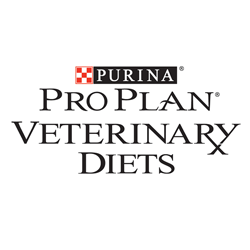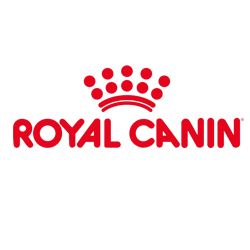Use of Therapeutic Diets not Related to Weight Loss
When the nutritional assessment indicates a patient may benefit from consuming a purpose-formulated therapeutic diet, the clinician needs to focus on specific nutrients of concern (Table 8). When a patient has a single disease condition and no additional nuanced feeding or diet requirements, it may be adequate to simply choose a therapeutic diet designed for the disease. In diseases in which diagnostics and staging affect nutrients of concern (e.g., CKD) or when patients have multiple disease conditions and/or additional feeding or diet requirements, consider all nutrients of concern before selecting a diet. Otherwise, it is easy to overlook a nutrient of concern and inhibit or negate the treatment plan for the patient’s condition. For example, if a dog receiving a low-fat diet to manage chronic pancreatitis is diagnosed with CKD, a dietary change to address the CKD may result in recurrent pancreatitis symptoms if both disease conditions are not considered.
Table 8
Nutrients of Concern for Diseases and Select Specific Conditions
Download PDF
Adverse food reaction >
|
Image goes here |
Specific Conditions |
Nutrients of Concern |
Notes |
|---|---|---|---|
|
Cutaneous adverse food reaction |
|
|
|
|
Food intolerance |
|||
|
Food-responsive chronic enteropathy |
Inflammatory skin condition >
|
Image goes here |
Specific Conditions |
Nutrients of Concern |
Notes |
|---|---|---|---|
|
Non-food-related skin condition |
|
|
Osteoarthritis >
|
Image goes here |
Specific Conditions |
Nutrients of Concern |
Notes |
|---|---|---|---|
|
|
|
|
Neurologic conditions >
|
Image goes here |
Specific Conditions |
Nutrients of Concern |
Notes |
|---|---|---|---|
|
Cognitive dysfunction |
|
|
|
|
Idiopathic epilepsy |
|
||
|
Anxiety |
|
Cardiovascular disease >
|
Image goes here |
Specific Conditions |
Nutrients of Concern |
Notes |
|---|---|---|---|
|
Degenerative valve disease |
|
|
|
|
Hypertrophic cardiomyopathy |
|||
|
Dilated cardiomyopathy |
|
Urolithiasis >
|
Image goes here |
Specific Conditions |
Nutrients of Concern |
Notes |
|---|---|---|---|
|
Calcium oxalate |
|
|
|
|
Struvite |
|
||
|
Urate |
|
||
|
Cystine |
|
Lower urinary tract disease >
|
Image goes here |
Specific Conditions |
Nutrients of Concern |
Notes |
|---|---|---|---|
|
Matrix-crystalline plugs |
|
|
|
|
Feline idiopathic cystitis |
|
Pancreatic disease >
|
Image goes here |
Specific Conditions |
Nutrients of Concern |
Notes |
|
|---|---|---|---|---|
|
Endocrine |
Diabetes mellitus |
|
|
|
|
Exocrine |
Pancreatitis |
|
|
|
|
Exocrine pancreatic insufficiency |
|
|
||
Gastrointestinal >
|
Image goes here |
Specific Conditions |
Nutrients of Concern |
Notes |
|---|---|---|---|
|
Acute vomiting, diarrhea |
|
|
|
|
Chronic enteropathy |
|
|
|
|
Intestinal dysbiosis |
|
|
|
|
Fiber-responsive colitis |
|
|
|
|
Large bowel diarrhea |
|||
|
Constipation |
|
|
|
|
Obstipation |
|
|
Other endocrine >
|
Image goes here |
Specific Conditions |
Nutrients of Concern |
Notes |
|---|---|---|---|
|
Hyperlipidemia |
|
|
|
|
Feline idiopathic hypercalcemia |
|
||
|
Hyperthyroid |
|
|
Liver disease >
|
Image goes here |
Specific Conditions |
Nutrients of Concern |
Notes |
|
|---|---|---|---|---|
|
Encephalopathic |
|
|
||
|
Copper-associated hepatopathy |
Portosystemic shunt |
|
|
|
|
Microvascular dysplasia |
||||
|
Chronic hepatitis |
||||
|
Nonencephalopathic |
|
|||
Kidney >
|
Image goes here |
Specific Conditions |
Nutrients of Concern |
Notes |
|---|---|---|---|
|
Protein-losing nephropathy |
|
|
|
|
Acute kidney injury |
|
|
|
|
Chronic kidney disease |
|
|
Obesity >
|
Image goes here |
Specific Conditions |
Nutrients of Concern |
Notes |
|---|---|---|---|
|
|
|
|
Dental disease >
|
Image goes here |
Specific Conditions |
Nutrients of Concern |
Notes |
|---|---|---|---|
|
|
|
|
Critical care >
|
Image goes here |
Specific Conditions |
Nutrients of Concern |
Notes |
|---|---|---|---|
|
|
|
|






